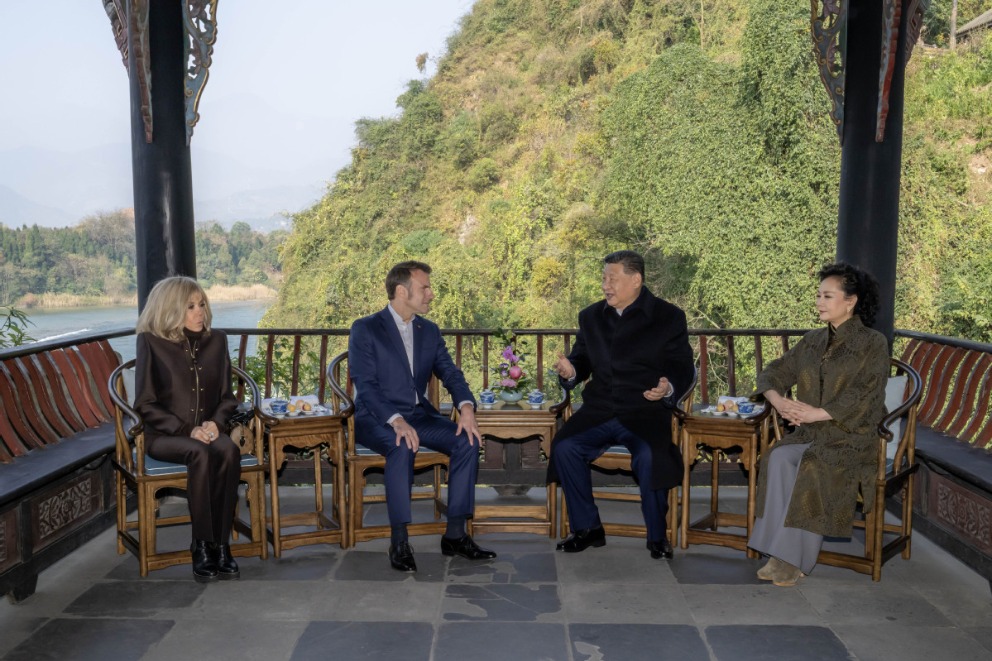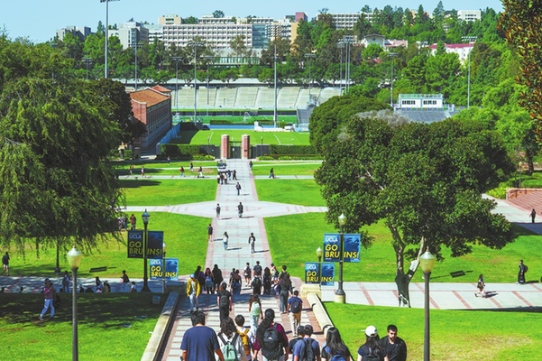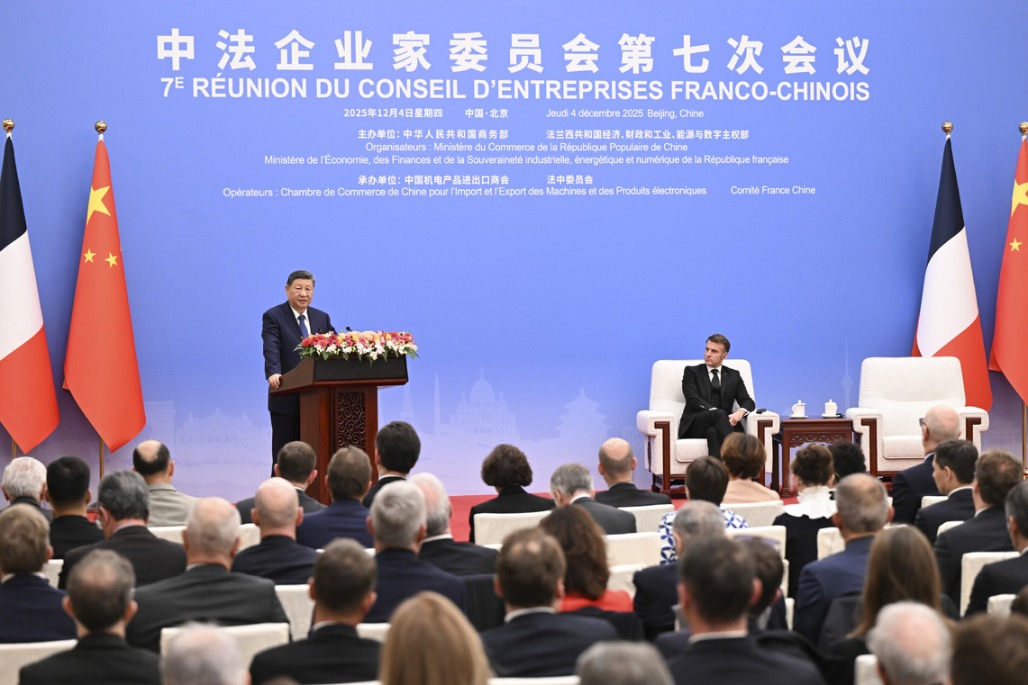Reform, innovation reconfigure growth pattern in China's western region
Xinhua | Updated: 2024-08-14 15:43

BEIJING - In as little as 30 minutes, a new business can be opened in the Lanzhou New Area, Northwest China's Gansu province.
Speed is a testament to the power of reform. In recent years, the Lanzhou New Area has significantly simplified administrative procedures, enabling more than 2,800 government service items to be handled online.
With all these efforts in place, the annual growth rate of the number of business entities in the area has been maintained at over 20 percent, and in the first half of this year, the area saw the establishment of more than 10,000 new business entities.
"A key characteristic of a high-level socialist market economy is that it is both vibrant and manageable," said Wang Shuzheng, who is with the Party work committee of the Lanzhou New Area.
Focusing on the core issue of managing the relationship between government and market, Wang emphasized the commitment to creating a more fair and dynamic market environment through deepening systematic and institutional reforms.
In 2012, the Lanzhou New Area was approved by the State Council as the fifth national-level special economic development zone, and it was also the first State-level new development area in the northwest of China.
From 2011 to 2023, the regional GDP of the Lanzhou New Area increased from less than 500 million yuan (about $70 million) to 37.5 billion yuan.
Creating new dynamics
The Lanzhou New Area is an epitome of how reform vitalizes the western region of China, which accounts for about two-thirds of the country's land area, turning the once economically underdeveloped region into one full of growth potential.
Over the years, a slew of reform measures have been rolled out to further unleash the growth potential of the expansive and resource-rich western region, with a focus on region-specific approaches to nurturing emerging industries and expediting industrial transformation and upgrade.
In the Liangjiang New Area of Chongqing municipality in the southwest of China, a vibrant ecosystem of research and development institutions is flourishing, supported by prestigious academic institutions including the Beijing Institute of Technology, Harbin Institute of Technology and Northwestern Polytechnical University.
Among these, the Chongqing Institute of New Energy Storage Materials and Equipment stands out for its dedication to advancing hydrogen energy research, aiming to achieve significant technological breakthroughs in new energy batteries.
"The potential for hydrogen energy is vast, yet we face the challenge of developing safe and cost-effective methods for hydrogen storage and transportation," remarked Wang Jingfeng, executive director of the institute.
Chongqing University, in partnership with the Liangjiang New Area, has established the research institute to amalgamate cutting-edge R&D with industry resources, thereby constructing a premier platform for scientific inquiry.
"Our current research into magnesium-based battery materials and hydrogen storage technologies is leading the industry, marking a significant stride toward the future of energy solutions," Wang added.
As China's southwestern industrial powerhouse, Chongqing had built 144 intelligent factories and 958 digital workshops by the end of 2023, according to Chongqing's municipal commission of economy and informatization.
In Gansu, the transition of Lanzhou LS Group, a long-established equipment manufacturer, has proven how reform propels innovation.
By steering toward high-end transformation, the group maintains its competitive edge in traditional sectors such as oil refining and chemical equipment, as well as oil and gas drilling equipment.
Simultaneously, it is cultivating strategic emerging industries with a focus on cutting-edge nuclear, hydrogen and photovoltaic energy storage technologies, complemented by the development of high-end alloys and nanotechnology-based new materials.
This dual-pronged approach has yielded significant results, as evidenced by a robust 32.78 percent year-on-year increase in the output value of the group's strategic emerging industries in the first half of 2024.
"Without reform and innovation, we would not have reached where we are today, nor would we have a bright future," said Gao Feng, deputy general manager of LS Group.
In the border province of Yunnan, Southwest China, cross-border cargo shipments on the China-Laos Railway, launched in December 2021, have exceeded 41 million tons, injecting new impetus into high-quality Belt and Road cooperation and inter-regional development.
All for a better living
Serving as a vital ecological defense, the western region is persistently forging ahead with practical exploration of promoting ecological civilization. This commitment is bolstering the drive toward a modernization that embodies harmony between humanity and nature, ensuring robust support for its transformative journey.
With a better ecological environment, the western region's tourism sector has welcomed a boom in recent years, leveraging its unique splendid landscape and culture.
Located in the Ningxia Hui autonomous region in Northwest China, Suji Yellow River, a cluster of China's leading luxury guesthouses, has become a sensation on the country's social media for preserving the architectural style of the original villages while at the same time implanting a fashionable and modern vacation lifestyle into the countryside.
"Seeing the children revel in the sand and splash in the water brings us immense joy. The tranquility of the desert offers a serene escape from the hustle and bustle," said Yang Sha, a 39-year-old visitor from Sichuan.
In Xinjiang, Northwest China, the region's grasslands and snowy mountains draw flocks of adventure-seekers, while in Yunnan, the charm of rural and ecological tours has won the hearts of travelers from near and far, making it a sought-after destination for those seeking a connection with nature and local culture.
Yuhu village, nestled in Baisha township of Yulong Naxi autonomous county in the city of Lijiang in Yunnan, is one of the earliest settlements of the Naxi ethnic people and is renowned for its well-preserved traditional Naxi architecture.
A leisurely walk through the village reveals a picturesque landscape where ancient dwellings are artfully arranged, creating a harmonious blend with the snow-capped mountains and tranquil lakes.
"In the past, activities such as lumbering, gold mining, and sand and stone excavation did not truly enrich our villagers," remarked He Xinhua, a local official.
"In recent years, we have strictly adhered to ecological and agricultural preservation policies while enhancing our agricultural and cultural tourism industries. In just the first seven months of this year, we welcomed over 350,000 visitors, generating more than 25 million yuan in tourism revenue," He said.
"Our ultimate goal is to improve the livelihood of the local residents while safeguarding the ecological environment, preserving our ancient villages, and protecting our ethnic culture. This commitment to sustainable development is the true 'treasure' that transforms Yuhu's natural beauty into a source of prosperity and wealth," He added.
























